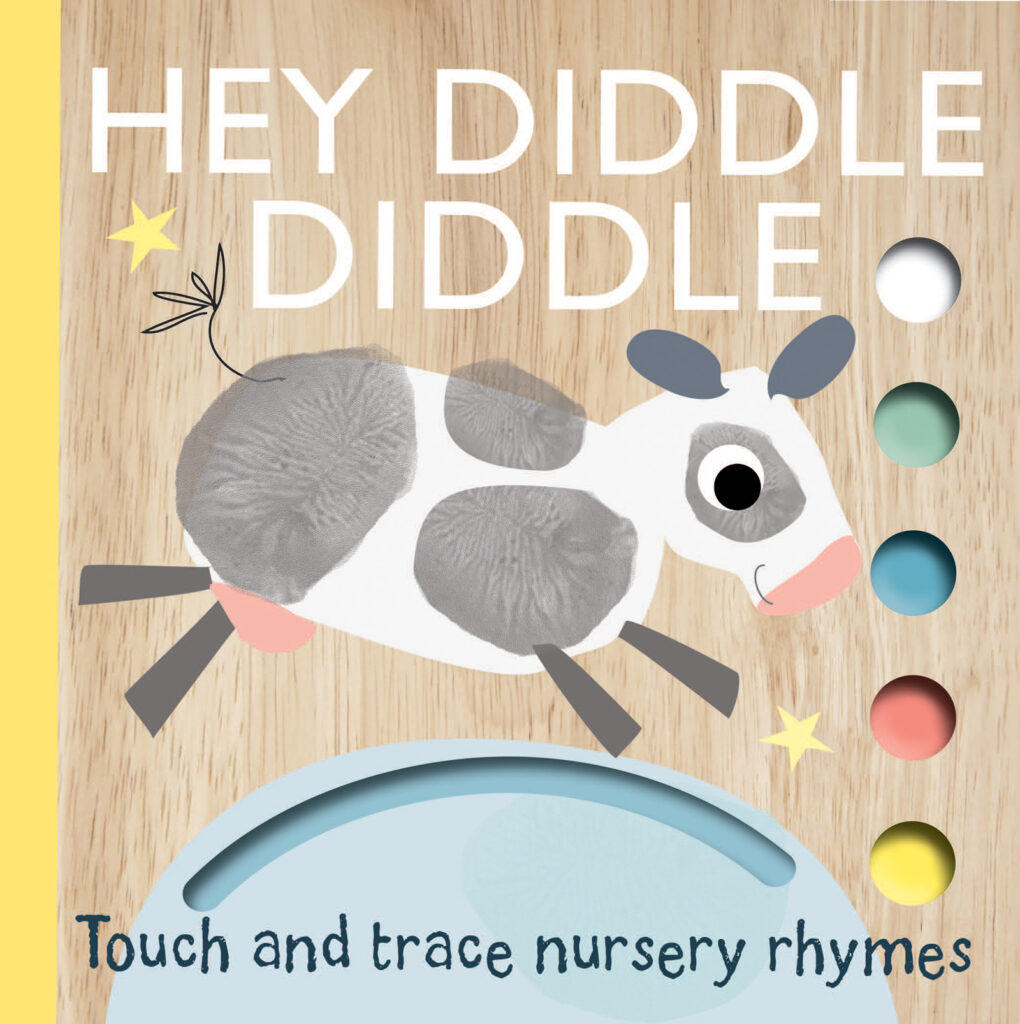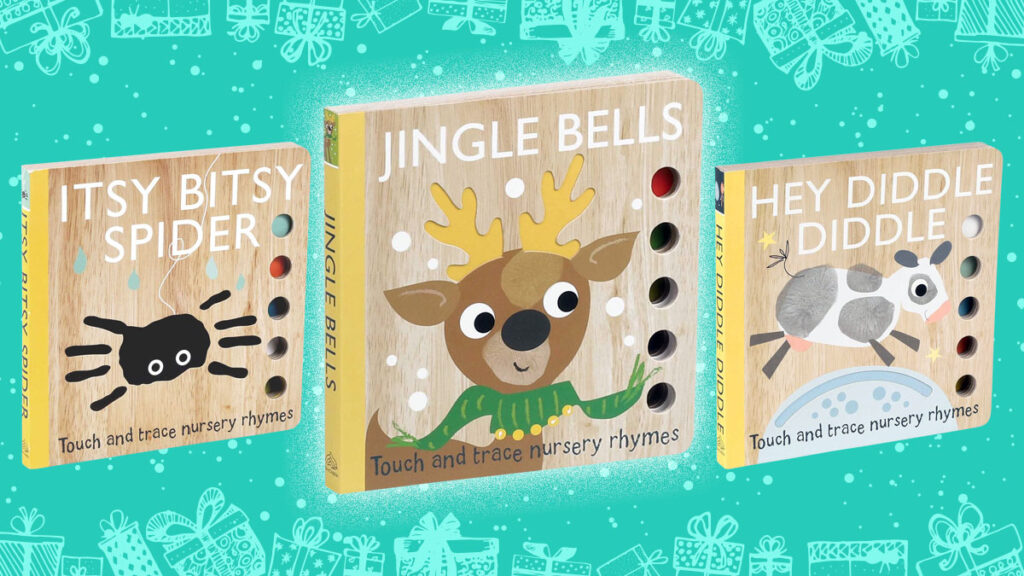By Christa Protano
Books are always a good gift idea. But when it comes to books for littles, the more interactive the better. That’s why the editors of Silver Dolphin Books put together the Touch and Trace Nursery Rhymes series. From “Jingle Bells” to “Hey Diddle Diddle,” these classic poems are ready for a whole new generation of readers. Perfectly sized for little hands, each touch-and-feel board book features five popular poems wrapped in a modern design with playful illustrations and tracing elements. With the holidays just around the corner, it’s time to add these sturdy, interactive board books to your shopping list. But don’t take our word for it, read why the experts recommend sensory books for toddlers and babies, too.
1. Improve Fine Motor Skills
“Touch-and-feel books, board books, and any book with unique textures on its pages support sensory development. Your baby will become more accustomed to feeling new textures as he handles sensory-focused books. This can, in turn, help him feel more comfortable with using a variety of toys that target fine motor skills, like clay, sand, and play dough, which have textures that take time for some toddlers to get used to.” — BabySparks.com
Just released, Touch and Trace Nursery Rhymes: Jingle Bells provides festive sensory fun with “Jingle Bells,” “Let It Snow,” “Deck the Halls,” and more.


2. Introduce New Words, Colors, and Shapes
“By the time babies reach their first birthday, they will have learned all the sounds needed to speak their native language. The more stories you read aloud, the more words your baby will hear and the better they’ll be able to talk. Hearing words helps to build a rich network of words in a baby’s brain.” — KidsHealth.org
With Wheels on the Bus, parents will love sharing the repetitive rhymes they grew up with, such as “Head, Shoulders, Knees, and Toes” and “Mary Had a Little Lamb.”
3. Engage Multiple Senses
“Effective reading approaches are often described as ‘multisensory.’ Multisensory phonics-based approaches are designed to reinforce learning by hearing words, seeing them, saying them, writing them in a sentence, even incorporating gestures and movements.” — Child Mind Institute
While your toddler is not yet able to pick up a pen, they will still benefit from the sense of touch by running their little fingers over the indented lines and circles in the pages of Itsy Bitsy Spider.


4. Encourage Word & Picture Association
“At a most basic level, picture books help kids understand that words convey meaning—connecting the pictures in the book with the words on the page. Kids will check pictures on the page for background knowledge or contextual clues for vocabulary development.” — ReadingPartners.org
In This Little Piggy, toddlers will start to recognize farm animals as they trace the illustrations found on pages with its title rhyme and “Baa, Baa, Black Sheep.”
5. Sensory Books are Parent Approved
“Honestly this is a great book. My son is 18 months old and he reads it every single day. He loves the holes in the pages so that he can turn the page himself. And he also loves all the cutouts where he’s able to touch and trace along with the story. The book is very sturdy. The illustrations are great.” – Jackie L., Amazon Reviewer of Hey Diddle, Diddle.








